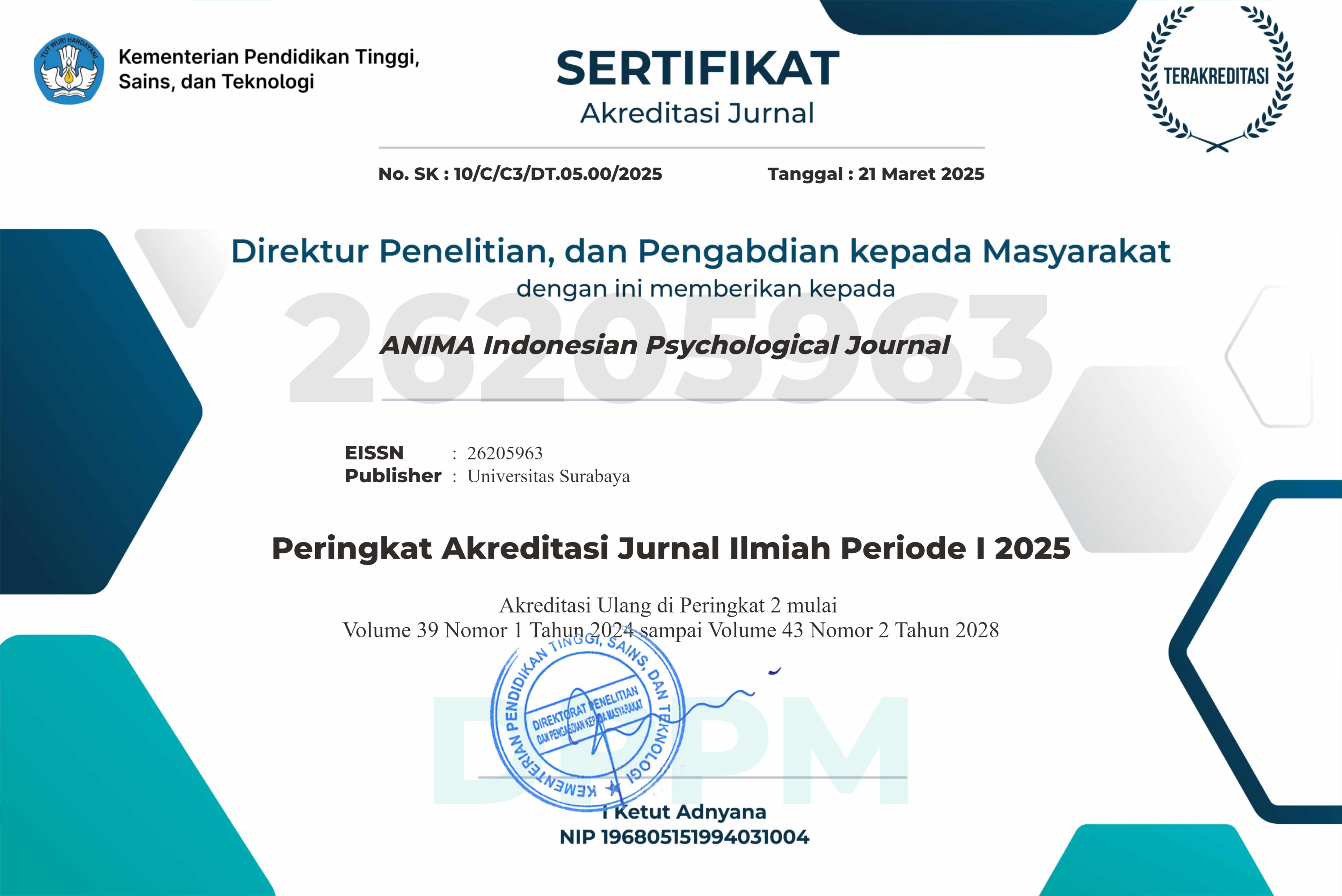Discharging Mental Health Patients in Aceh: A Preliminary Study
 Abstract Views:
139 times
Abstract Views:
139 times
 PDF-Full Text Downloads:
117 times
PDF-Full Text Downloads:
117 times
Abstract
A high prevalence of mental health patients in Aceh has caused the number of referrals in mental health institutions to rise. An appropriate discharge planning could ensure that patients will be able to continue to treat themselves after they leave the mental health institutions. The objective of this study was to describe the existing discharge planning process of mental health patients in Aceh. Research data was obtained by interviews, observations, and focus group discussions with schizophrenic patients' family members, important figures in the society and in their faith communities, and various officials at Puskesmas (community health centers), RSUD (local hospitals), and RSJ (mental health institutions). Research results show that the process of discharge did not proceed systematically and optimally. Moreover, there is no optimal coordination between mental health institutions and the surrounding communities, resulting in gaps of health services in Aceh. A better and more systematic discharge system are discussed to get the best results.
Tingginya jumlah pasien gangguan jiwa menyebabkan rujukan pasien ke RSJ di Aceh meningkat. Suatu perencanaan pelepasan pasien (discharge planning) yang baik dapat menjamin pasien mampu melakukan tindakan perawatan diri sendiri/lanjutan setelah meninggalkan rumah sakit jiwa. Studi ini bertujuan untuk mendapatkan gambaran pelaksanaan pelepasan pasien gangguan jiwa di Aceh selama ini. Data diperoleh dengan metode wawancara, observasi dan FGD pada keluarga pasien skizofrenia, tokoh agama dan masyarakat, petugas kesehatan di Puskesmas, RSUD, dan RSJ. Hasil menunjukkan bahwa pelaksanaan pelepasan pasien tidak berjalan secara sistematis dan optimal. Selain itu koordinasi antara pelayanan kesehatan di RS dan komunitas juga tidak optimal, sehingga menimbulkan kesenjangan pelayanan kesehatan di Aceh. Didiskusikan perlunya pelaksanaan sistem pelepasan pasien yang sistematis dan optimal demi tercapainya hasil yang terbaik.
Downloads
References
Backus L., Weinkove J. V., Lucas M. D., Jespersen S. (2008). Outcome of planned discharge from case management: a 3 year retrospective study. Australasian Psychiatry, 16(1): 33-38.
Baron, M., Erlenbusch, B., Moran, C.F., O`Connor, K., Rice, K., Rodriguez, J., Salazar, J.C. (2008). Best Practices Manual for Discharge Planning: mental health & substance abuse facilities, hospitals, foster care, prison & jails. Los Angeles coalition to end hunger & homelessness. Retrieved from: http://lacrr.org/PDF/BestPracticesDischargePlanningManualFINAL1.pdf.
Birjanda A. & Bragg L. M. (2009) Discharge Planning Handbook For Healthcare. Taylor & Francis group. New York
Caffrey A, Todd M. (2002). Community learning disability teams: the needs for objective methods of prioritization and discharge planning. Health Service Management Research, 15, 223-233.
Cleary, M., Horsfall, J., & Hunt, G. E. (2003). Consumer feedback on nursing care and discharge planning. Journal of Advanced Nursing, 42(3), 269–277.
Durgahee T. (1996) Discharge of psychiatric users into the community: how many more must die? British Journal of Nursing. 5 (10), 618-20.
Gomez, M. Y. (2008). Discharge patients with behavioral disorders. Post-hospital follow-up is an important part. Hospital Case Mangement. 16(12). pp 182, 187–190. Retrieved from http://www.ncbi.nlm.nih.gov/pubmed?linkname=pubmed_pubmed&from_uid=19186467.
Inter–University Partnership for Streghtening Health System in Indonesia: Building New Capacity for Mental Health Care. Workshop Inter-University Partnership Programme, Harvard University, Gadjah Mada University, & Syiah Kuala University. Banda Aceh 11–12 January 2012.
King, M & Nazareth, I. (1996). Community care of patients with schizophrenia: The role of primary health care team. British Journal of General Practice. 46,231-237.
Moleong, L. (2006). Metodologi Penelitian Kualitatif Edisi Revisi. Bandung: PT. Remaja Rosdakarya Offset.
Pemila (2009) Konsep Discharge Planning (Concept of Discharge Planning). Retrieved from: www.fik. ui.ac.id/.../KONSEP%20DISCHARGE%20PLANNING.doc.
Perreault M. et.al (2005). The Role of Relative in Discharge Planning from Psychiatric Hospital: The Perspective of Patients and Their Relatives. Psychiatric Quarterly. Vol.76. No.4.
Riset Kesehatan Dasar Departemen Kesehatan 2007. Laporan Nasional. Badan Penelitian dan Pengembangan Kesehatan Departemen Kesehatan Republik Indonesia. Desember 2008.
Shepperd, S., Lannin, N. A., Clemson, L. M., McCluskey, A., Cameron, I. D., Barras, S. L., (2013) Discharge planning from hospital to home. Cochrane Database of Systematic Reviews. John Wiley & Sons. Issue 1. Art. No.: CD000313. DOI: 10.1002/14651858.CD000313.pub4. Accessed 19 Maret 2013.
Teferra, S., Hanlon, C., Beyero, T., Jacobsson, L., & Shibre, T. (2013). Perspectives on reasons for non adherence to medication in persons with schizophrenia in Ethiopia: A qualitative study of patients, caregiver and health workers. BMC Psychiatry. 13:168
WHO & WONCA. (2008). Integrating mental health into primary care: A global perspective. Singapore: World Health Organization and World Organization of Family Doctors

This work is licensed under a Creative Commons Attribution-NonCommercial-ShareAlike 4.0 International License.
Articles published in ANIMA are licensed under a Creative Commons Attribution-NonCommercial-ShareAlike 4.0 International license. You are free to copy, transform, or redistribute articles for any lawful, non-commercial purpose in any medium, provided you give appropriate credit to ANIMA and the original Author(s), link to the license, indicate if changes were made, and redistribute any derivative work under the same license.
Copyright on articles is retained by the respective Author(s), without restrictions. A non-exclusive license is granted to ANIMA to publish the article and identify itself as its original publisher, along with the commercial right to include the article in a hardcopy issue for sale to libraries and individuals.
By publishing in ANIMA, Author(s) grant any third party the right to use their article to the extent provided by the Creative Commons Attribution-NonCommercial-ShareAlike 4.0 International license.




